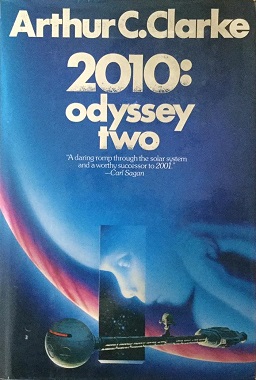
2010: Odyssey Two is a 1982 science fiction novel by British writer Arthur C. Clarke. It is the sequel to his 1968 novel 2001: A Space Odyssey, though Clarke changed some elements of the story to align with the film version of 2001.

Friday is a 1982 science fiction novel by Robert A. Heinlein. It is the story of a female "artificial person", the eponymous Friday, genetically engineered to be stronger, faster, smarter, and generally better than normal humans. Artificial humans are widely resented, and much of the story deals with Friday's struggle both against prejudice and to conceal her enhanced attributes from other humans. The story is set in a Balkanized 21st century, in which the nations of the North American continent have been split up into a number of smaller states.
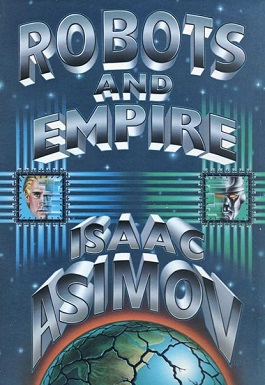
Robots and Empire is a science fiction novel by the American author Isaac Asimov, published by Doubleday Books in 1985. It is part of Asimov's Robot series, which consists of many short stories and five novels.

Demon Princes is a series of five science fiction novels by Jack Vance, which cumulatively relate the story of Kirth Gersen, a man trained by his grandfather to exact revenge on five notorious interstellar crime bosses, collectively known as the Demon Princes, who carried the people of his village off into slavery during his childhood. Each novel deals with his pursuit of one of the five Princes.
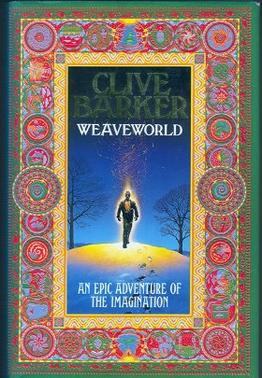
Weaveworld is a 1987 dark fantasy novel by English writer Clive Barker. It is about a magical world that is hidden inside a tapestry, known as the Fugue, to safeguard it from both inquisitive humans and hostile supernatural foes. Two normal people become embroiled in the fate of the Fugue, attempting to save it from those who seek to destroy it. The book was nominated in 1988 for the World Fantasy Award for Best Novel.
The use of nanotechnology in fiction has attracted scholarly attention. The first use of the distinguishing concepts of nanotechnology was "There's Plenty of Room at the Bottom", a talk given by physicist Richard Feynman in 1959. K. Eric Drexler's 1986 book Engines of Creation introduced the general public to the concept of nanotechnology. Since then, nanotechnology has been used frequently in a diverse range of fiction, often as a justification for unusual or far-fetched occurrences featured in speculative fiction.

Deathworld is the name of a series of science fiction novels by American writer Harry Harrison, including the books Deathworld, Deathworld 2 and Deathworld 3, plus the short story "The Mothballed Spaceship". The central hero is a gambler who becomes involved with colonists of an extremely hostile planet.

Tales of Pirx the Pilot is a science fiction stories collection by Polish author Stanisław Lem, about a spaceship pilot named Pirx.

The Unteleported Man is a 1966 science fiction novel by American writer Philip K. Dick, first published as a novella in 1964. It is about a future in which a one-way teleportation technology enables 40 million people to emigrate to a colony named Whale's Mouth on an Earth-like planet, which advertisements show as a lush green utopia. When the owner of a failing spaceship travel firm tries to take the 18-year flight to the colony to bring back any unhappy colonists, powerful forces try to stop him from finding out the truth.

The Face is a science fiction novel by American writer Jack Vance, the fourth novel in the "Demon Princes" series. It was published in 1979, nearly twelve years after the third.

The Killing Machine (1964) is a science fiction novel by American writer Jack Vance, the second in his "Demon Princes" series.

The Palace of Love (1967) is a science fiction novel by American writer Jack Vance, the third in his Demon Princes series. It is about a wealthy man, Kirth Gersen, who is obsessed with seeking vengeance on the remaining Demon Princes who killed his family many years ago. To get access to the elusive and secretive Viole Falushe, one of the Demon Princes, Gersen poses as a journalist and wrangles a rare invitation to Falushe's hedonistic Palace of Love.
The Revengers is the name of different fictional teams appearing in American comic books published by Marvel Comics.
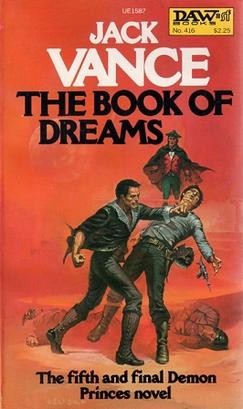
The Book of Dreams is a 1981 science fiction book by American author Jack Vance, the fifth and last novel in the Demon Princes series.

The Urth of the New Sun is a 1987 science fiction novel by Gene Wolfe that serves as a coda to his four-volume Book of the New Sun series. Like Book of the New Sun, it is of the Dying Earth subgenre. It was nominated for the Hugo Award for Best Novel, Locus Award for Best Science Fiction Novel and the Nebula Award for Best Novel in 1988.
The D'Bari are a fictional alien race appearing in American comic books published by Marvel Comics. They are famous as the people whose star system was destroyed by Phoenix during the Dark Phoenix Saga (1980).
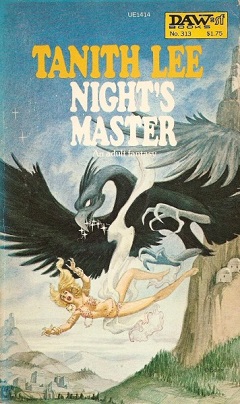
Night's Master is a 1978 fantasy novel by British writer Tanith Lee, the first in the Tales from the Flat Earth series. It has been translated into Dutch, Italian, French, German and Spanish. It was published with illustrations by George Barr in 1978 and by Alicia Austin in 1985. It was nominated for a World Fantasy Award for Best Novel in 1979.

The Wizard of Linn is a science fiction novel by Canadian American writer A. E. van Vogt, a sequel to Empire of the Atom. The novel was originally serialized in the science fiction magazine Astounding Science Fiction. It was first published in book form in Germany in 1961 by Terra Sonderband, as Der Zauberer von Linn.

Black Star Rising, published in 1986, is a dystopian science fiction novel by American author Frederik Pohl. It is about a post-nuclear war future in which a conquered United States becomes a Chinese farming colony. The main character is an American who the Chinese send to meet a race of warlike aliens who come to Earth.

The Final Encyclopedia is a science fiction book by Gordon R. Dickson published in 1984. It is part of the Childe Cycle series. The Final Encyclopedia transitions from the militaristic action-adventure of the earlier books in the Childe Cycle to a philosophical commentary on the evolution of humankind.


















